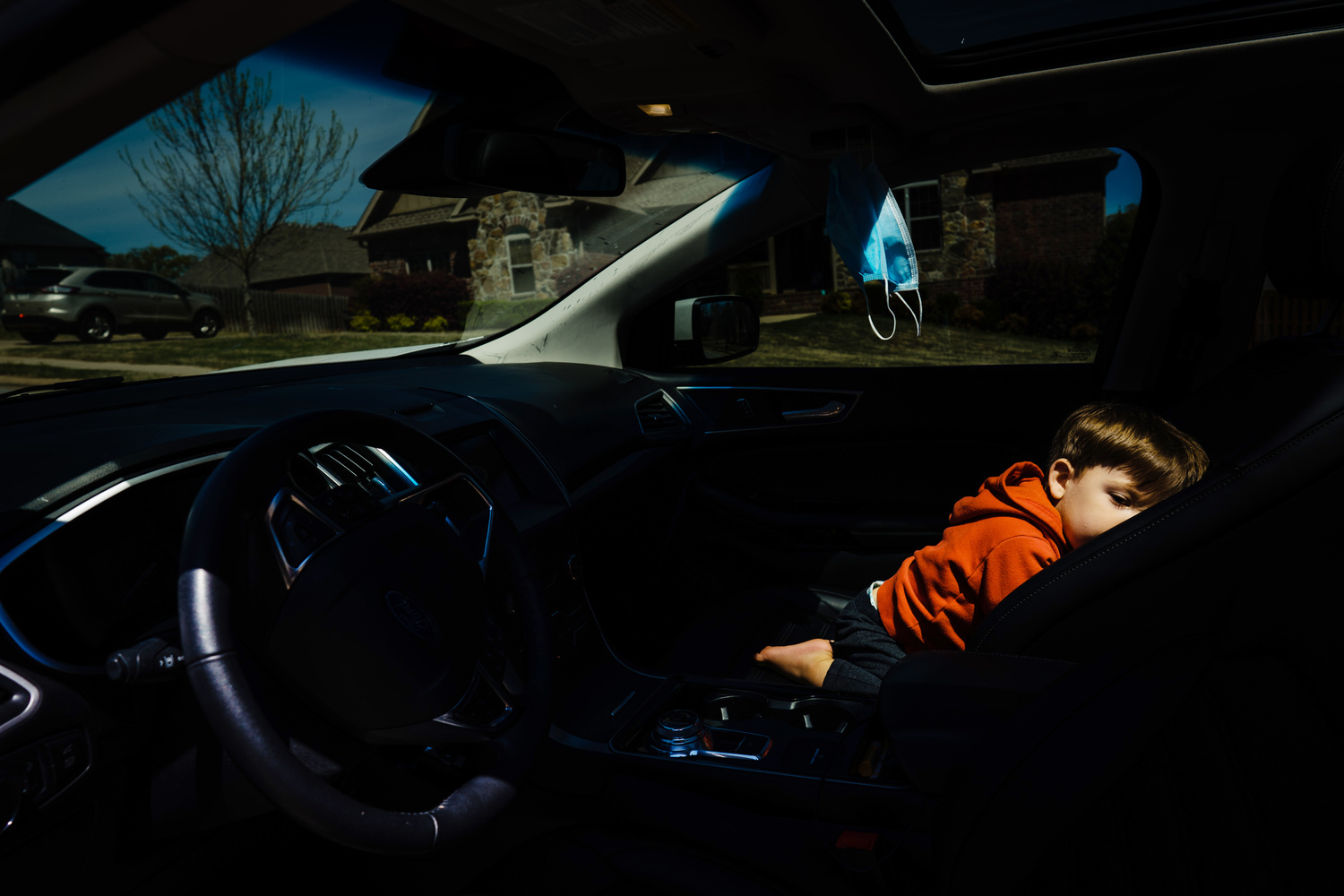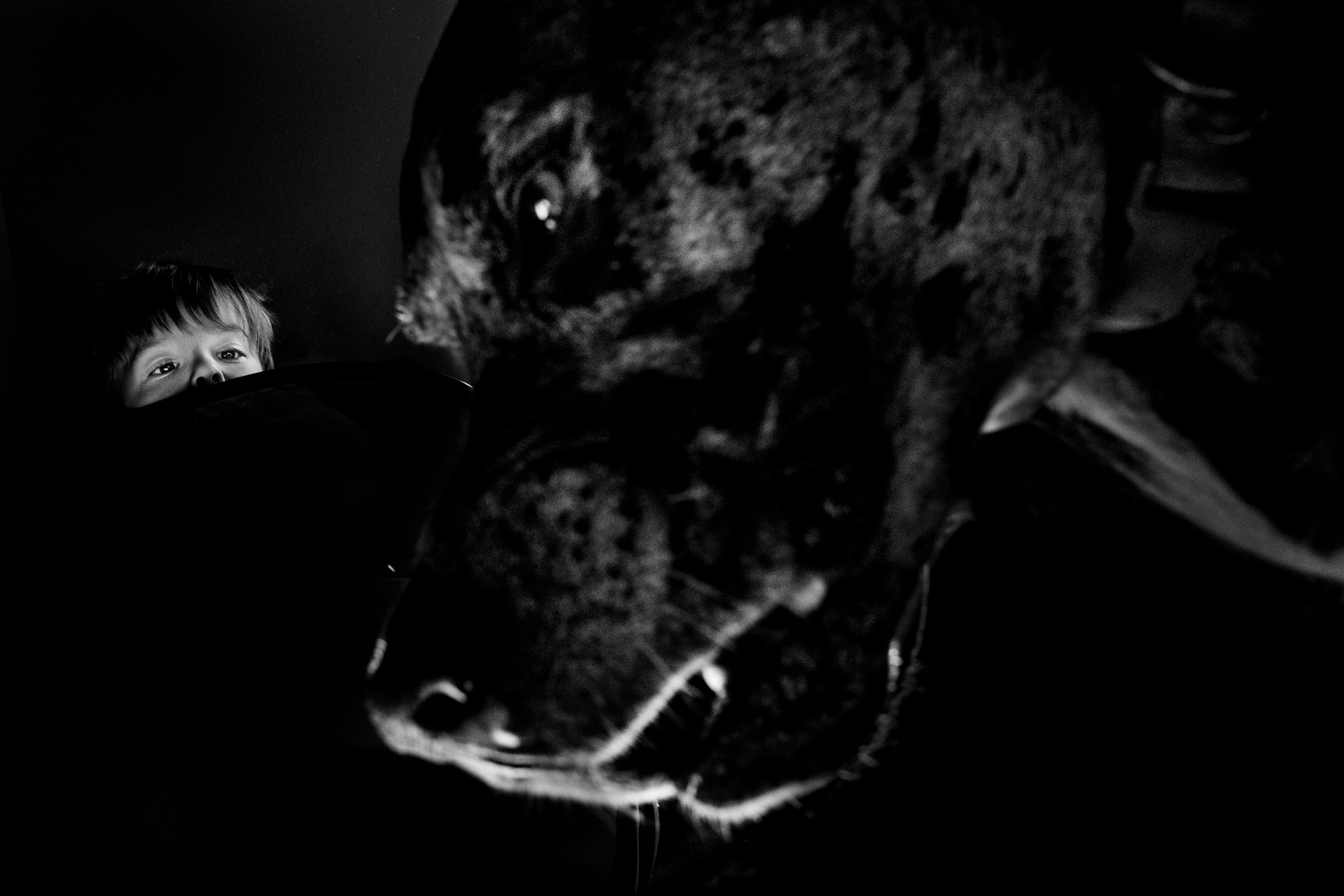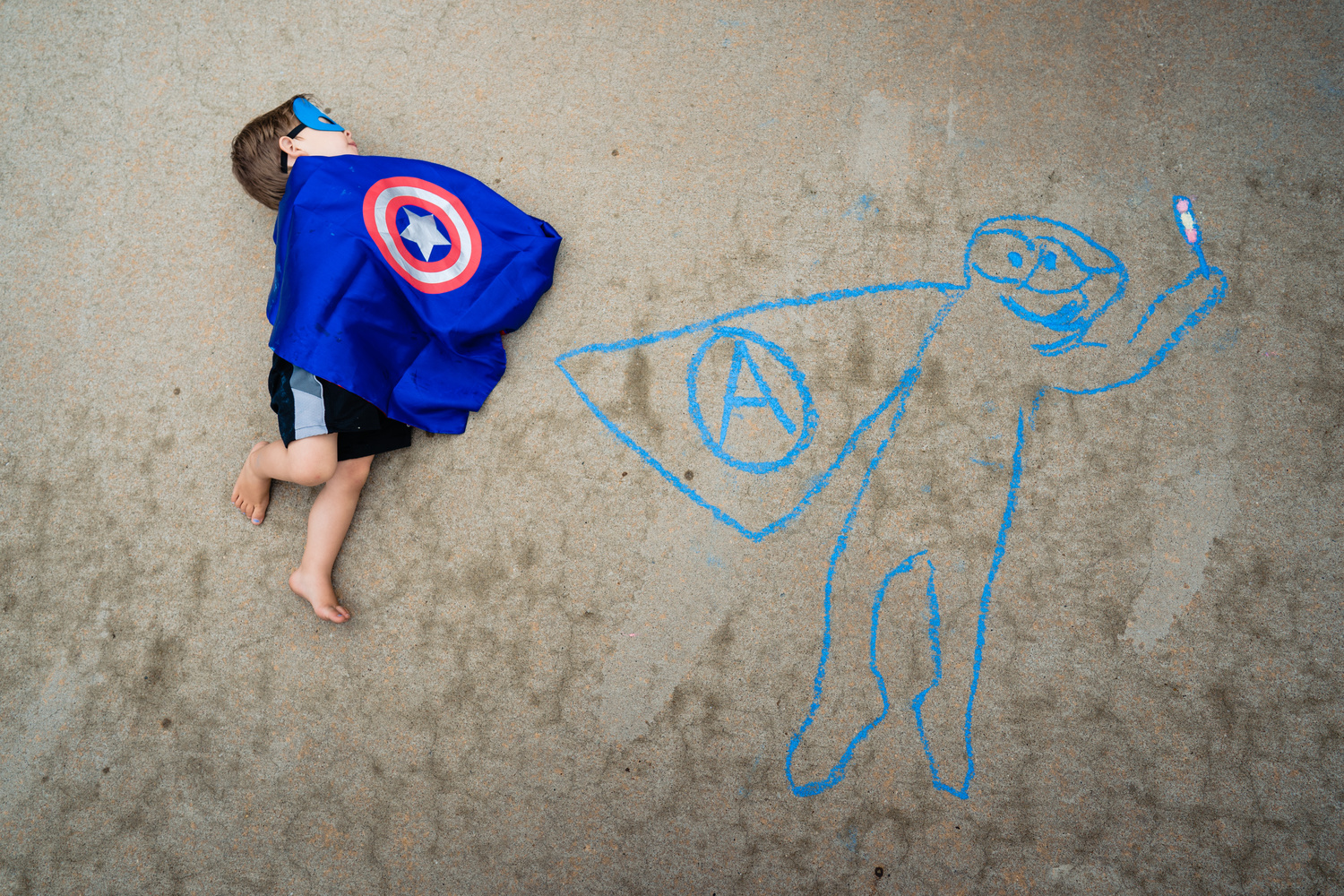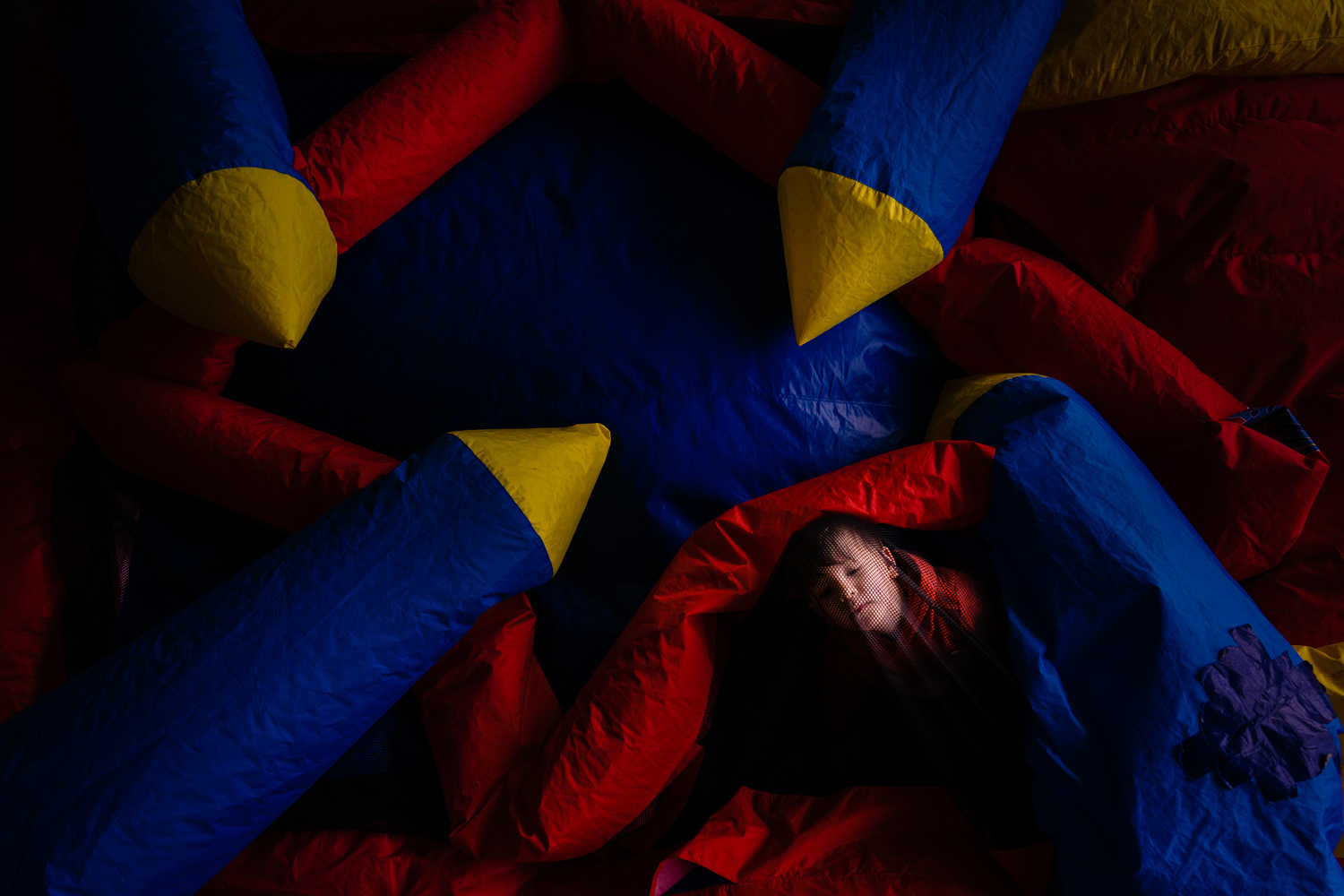Taking images of your family every day for 50 days is a challenge all on its own. Pair that with being stuck at home in quarantine for all 50 of those days, and things get downright interesting. This is how I approached it and what I learned.
The Basics
This all started with the delivery of a new lens: the Tamron 20mm f/2.8 for my Sony a9. As a Northwest Arkansas wedding photographer stuck at home, I was left with nothing to shoot. So, I did what most photographers would do, and I turned the camera toward my kid. At this point, we had been in self-isolation for a few days, and things were already starting to feel a little restless. After the first day of shooting, I had a blast and decided I’d do it again the next day.

After the second day of shooting, I decided to make a lens change and moved over to my Sony 24mm G Master. I simply wanted the extra light gathering ability, and the Sony lens has much faster autofocus. The reason I didn’t simply change lenses when needed is that I find it freeing to give myself limitations. If I have access to all my lenses, all my lights, and all my gear, then I can simply shoot anything and everything all day long. But limiting myself to a single lens causes me to only look for certain situations to shoot. This helps me concentrate on what I can shoot well instead of chasing every image that has potential. It's also a lot easier to keep the camera by my side if I don't have to worry about carrying around a ton of gear.

So, throughout the day, I always had my eye open for interesting light. If that light also lined up with an interesting composition and my son was also in that area, then I would shoot. If the light wasn't right or the composition was cluttered, then I left the camera at my side or on a table and simply enjoyed the moment.

What this did was allow me to be super selective in what I was spending my time on. If I had the option to use any lens in my bag, I would always have the ability to change my focal length to make a scene work. The 24mm lens also made my options for a clean composition very limited. Because the lens is so wide, there was a very clear view in my mind's eye of what would and would not work. The 24mm lens also made it so I couldn't rely on simply blurring out my background as I could with something like a 50mm or 85mm lens.

Light
When I talk about looking for a light, it's important to mention that I was looking for a specific type of light. For me, I’m drawn to directional light with a fast falloff. This type of light is most easily found from the hard light of the sun, but can also be found when a subject is close to a light source. For example, if our son was right up against a window, the light was nice and soft, but because he was close, the light fell to shadow much faster than if he was further into the room.

A similar example is if he is playing right at the opening of our garage door. This allows him to have a nice soft light on him, and the inside of the garage falls to shadow.

I’m also a big fan of rim light, bounced light, and silhouettes. The good thing about these lighting conditions is that they tend to use the same type of light I previously discussed, just with varying angles of capture. Again, this makes it so I have a very special thing I’m looking for in terms of light, which clears my mind of all the other situations constantly going on around me.

On the rare occasion (I think only five times in the 50 days), I also used an off-camera light. I did this twice in a dark room when I just felt like shooting. I also was curious how it would look if some light went through a set of colored blocks my son was playing with, and I knew that shot would never unfold on its own.

I also used the off-camera light three other times for shooting in the bathtub. The light I was using is the Stella 5000 Pro and Stella 2000, which are both able to be fully submerged into water. So, I simply let our son play with the light till he got bored. Once the light was left on the floor of the tub, I was able to capture some authentic moments with a bit of added flair to my lighting.

Composition
Clean compositions are also one of the main things I was looking for, which can be tough when you are stuck in a cluttered house or when walking around your block (especially when shooting at 24mm). Because of this, you will notice that a lot of the images I have were from high or low angles of view. This allowed me to hide any of the distracting elements out of the frame.

Other than that, I was mainly looking for ways to frame my son in a clean spot — that, or to make sure he was the brightest subject or the one with the most contrast (think silhouettes or in focus elements). Basically, I was trying to make sure he was the first thing a viewer was drawn to when looking at the image.

When I think about composition, I also like to try and show things from a perspective that most people don't naturally view a scene from, such as being close to a subject people don't traditionally see up close. This also works with getting high and low. People are used to seeing a scene from their height, so even getting a couple of feet lower or higher can give a viewer a totally different perspective. I also used an Outex underwater housing for a few images during bathtime. One thing most people are not used to seeing is an underwater perspective.


Real Moments
Another self-limiting rule I gave myself was to only capture real moments as they naturally happen. Nothing against posing a subject, but for me, letting moments naturally unfold always leads to a more interesting image than if I try to make the image I came up with in my mind. Plus, a two-year-old is basically impossible to direct anyway.


When people think of moments, they think of things like laughter, crying, and catching spilled milk mid-fall. They think of big emotions and big events. While those types of moments make for great images, they aren't always needed in order for there to be a moment worth capturing. As long as the light and composition are right, something as small as catching a foot mid-step can be all the moment you need. Just enough to add visual interest. Enough to portray movement. Enough to get the viewer's mind thinking and wondering.

This is why I focused primarily on light and composition. If you have a great moment, you don't necessarily need great light and composition to make a good image. But if you have great light and composition, you can make even a mundane moment like jumping two inches off the ground feel like an epic moment.

I also had a bit of an ace up my sleeve for capturing moments. Because I'm photographing my own son, I have a pretty good understanding of his routine. I know what he likes to do, and I can predict his reactions to the world around him. So, when a neighboring family is walking their dog down the street, I know he will look their way and that he will probably point at the dog. Knowing your subject is the name of the game. So, photographing your own kid can almost feel like cheating.

What I Learned
Over these 50 days of shooting, photographically speaking, I have learned how to be more patient as well as selective. I have learned to anticipate moments better instead of chasing them. There are also small nuances to light that can make or break an image. And being selective in what image you choose to show can go a long way.

But the biggest learning point for me was in relation to my son. As I continued on with this project, I assumed I would capture our son getting stir crazy. I imagined meltdowns and fits caused by boredom. Instead, I was met with a glimpse at just how resilient children really are. Because our son couldn't play with his friends, he made new imaginary playmates and found make-believe games to entertain himself. Walks around the block turned into ninja adventures, and bathtime became a prehistoric event. I quickly realized that I wasn't actually documenting life-altering changes. Instead, I was documenting the everyday possibilities of a child — the ups and downs of everyday life. So, in my attempt to document a life-altering event, I realized that every day to a child is filled with one of a kind moments. Moments we can never get back. And even if you take the same walk around the block every day, each day will present you with something new and exciting. In all 50 days of shooting, I never found myself shooting something that was the exact same as a previous day. Every moment had its own special quality to it.

So, with that, I feel more motivated to continue this journey, to continue looking for images to capture and small everyday stories to tell, especially since right in the midst of this little project, we welcomed our second child into the world. To see more images from these 50 days of shooting, make sure to check out the full set over on our blog.






Brilliant and touching.
Thank you!! 🙏
Love this one. Beautiful pictures....what lovely documentary for the family.
Appreciate it!! ☺
Enjoyed the video, photos and narration all the same...
The photographs are brilliant!
If someone says otherwise then punch them in the face for me 😁